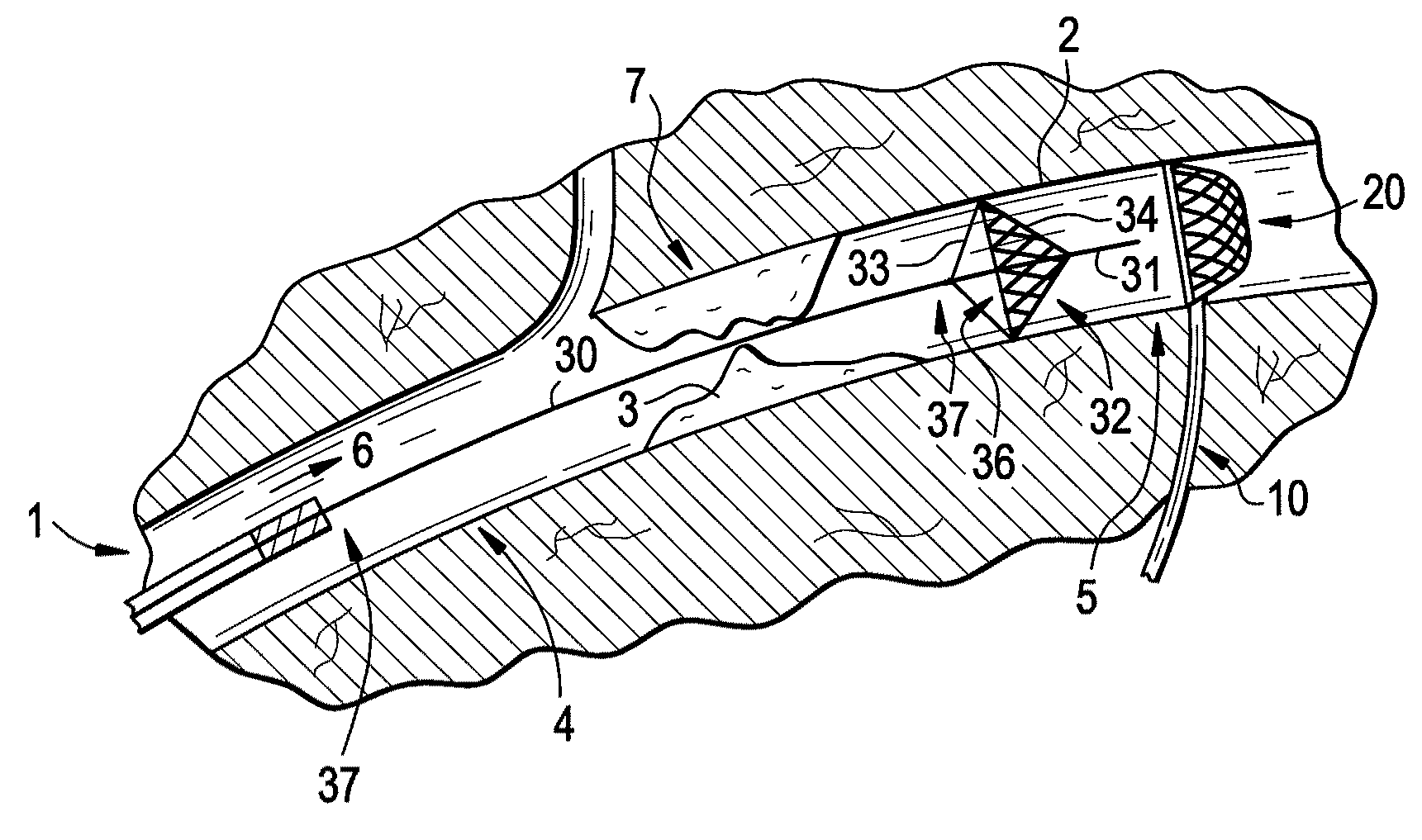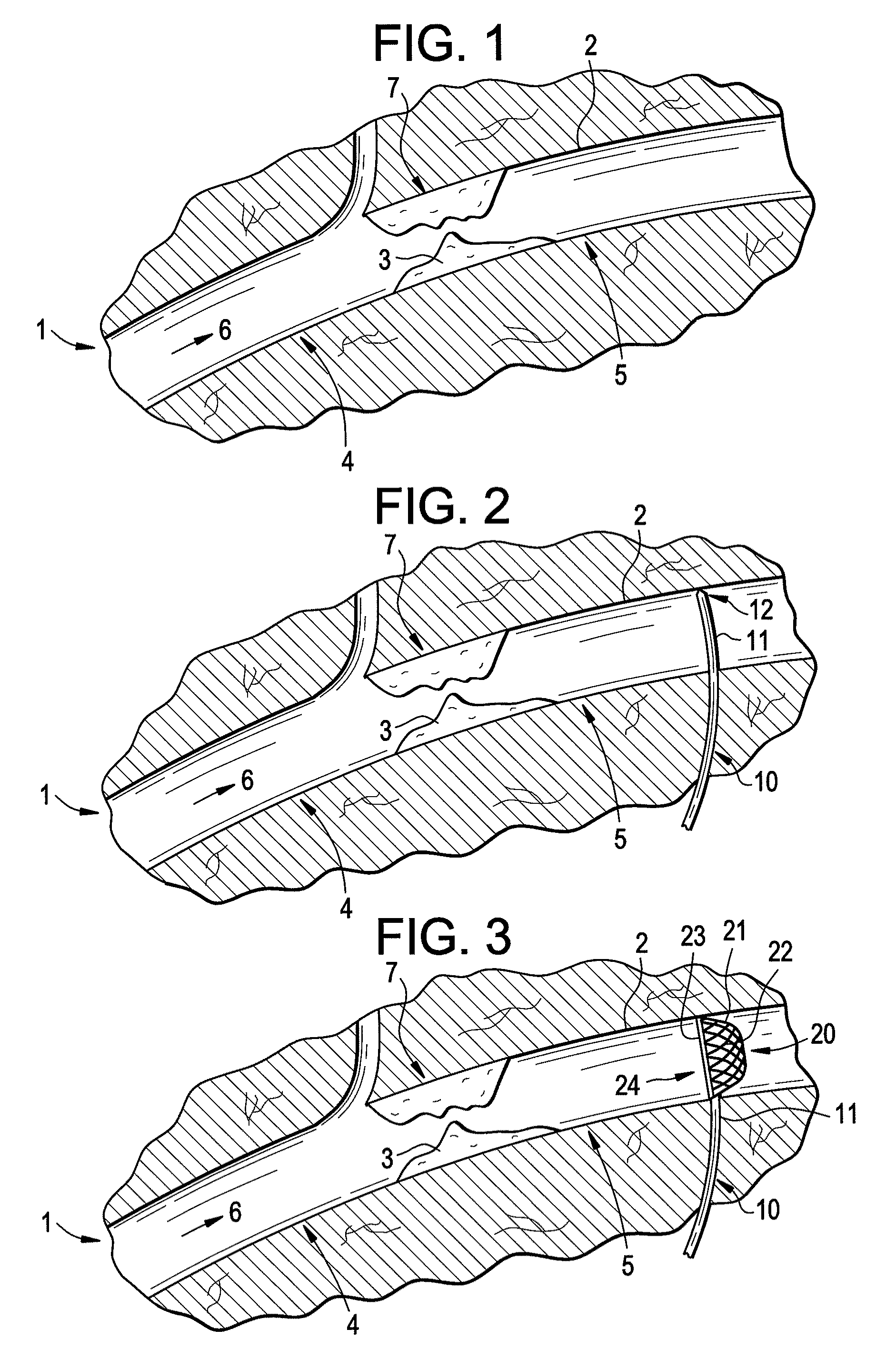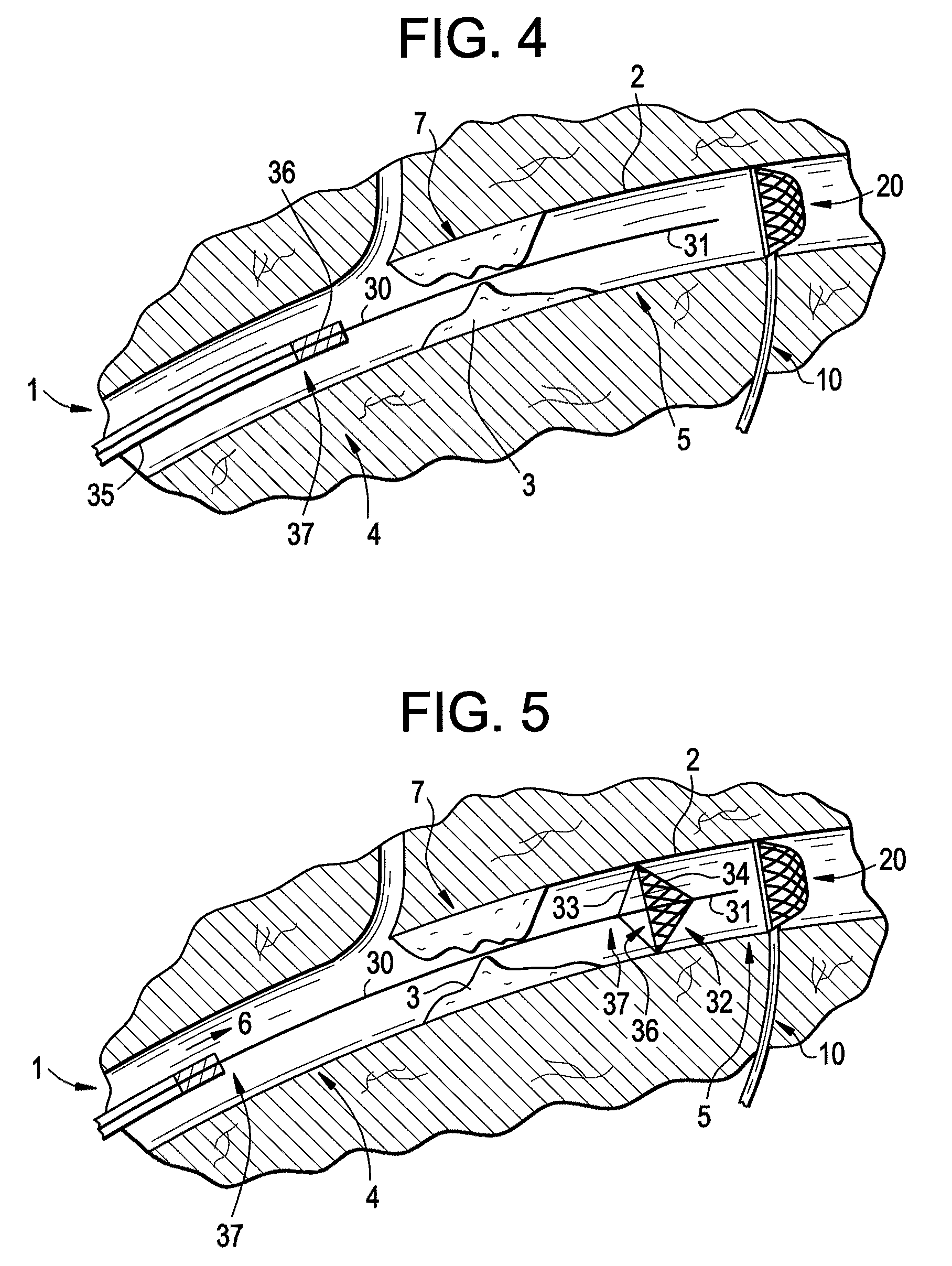Distal access embolic protection system and methods of using the same
a protection system and distal access technology, applied in the field of medical devices, can solve the problems of neurological impairment, patient experiencing a loss of function, brain impairment either temporarily or permanently,
- Summary
- Abstract
- Description
- Claims
- Application Information
AI Technical Summary
Benefits of technology
Problems solved by technology
Method used
Image
Examples
Embodiment Construction
[0034]It is to be understood that both the foregoing general description and the following detailed description are exemplary and are intended to provide further explanation of the invention claimed.
[0035]FIG. 1 shows a blood vessel 1 defined by a vessel wall 2. The blood vessel 1 has an area of plaque 3 within the treatment area 7. Blood flows across the plaque 3 in the direction 6, from the proximal side 4 of the plaque 3 to the distal side 5 of the plaque.
[0036]Referring to FIGS. 2 and 3, a first embodiment of the present invention is illustrated, namely a distal access embolic protection system 10 including a catheter 11 and a filter device 20 that is inserted through the wall 2 of the blood vessel 1 at a position on the distal side 5 of the plaque 3. By inserting the distal access embolic protection system 10 through the wall 2 of the vessel, it is possible to deliver the medical device to the distal side 5 of the plaque 3 without crossing the treatment site 7 with a catheter, ...
PUM
 Login to View More
Login to View More Abstract
Description
Claims
Application Information
 Login to View More
Login to View More - R&D
- Intellectual Property
- Life Sciences
- Materials
- Tech Scout
- Unparalleled Data Quality
- Higher Quality Content
- 60% Fewer Hallucinations
Browse by: Latest US Patents, China's latest patents, Technical Efficacy Thesaurus, Application Domain, Technology Topic, Popular Technical Reports.
© 2025 PatSnap. All rights reserved.Legal|Privacy policy|Modern Slavery Act Transparency Statement|Sitemap|About US| Contact US: help@patsnap.com



